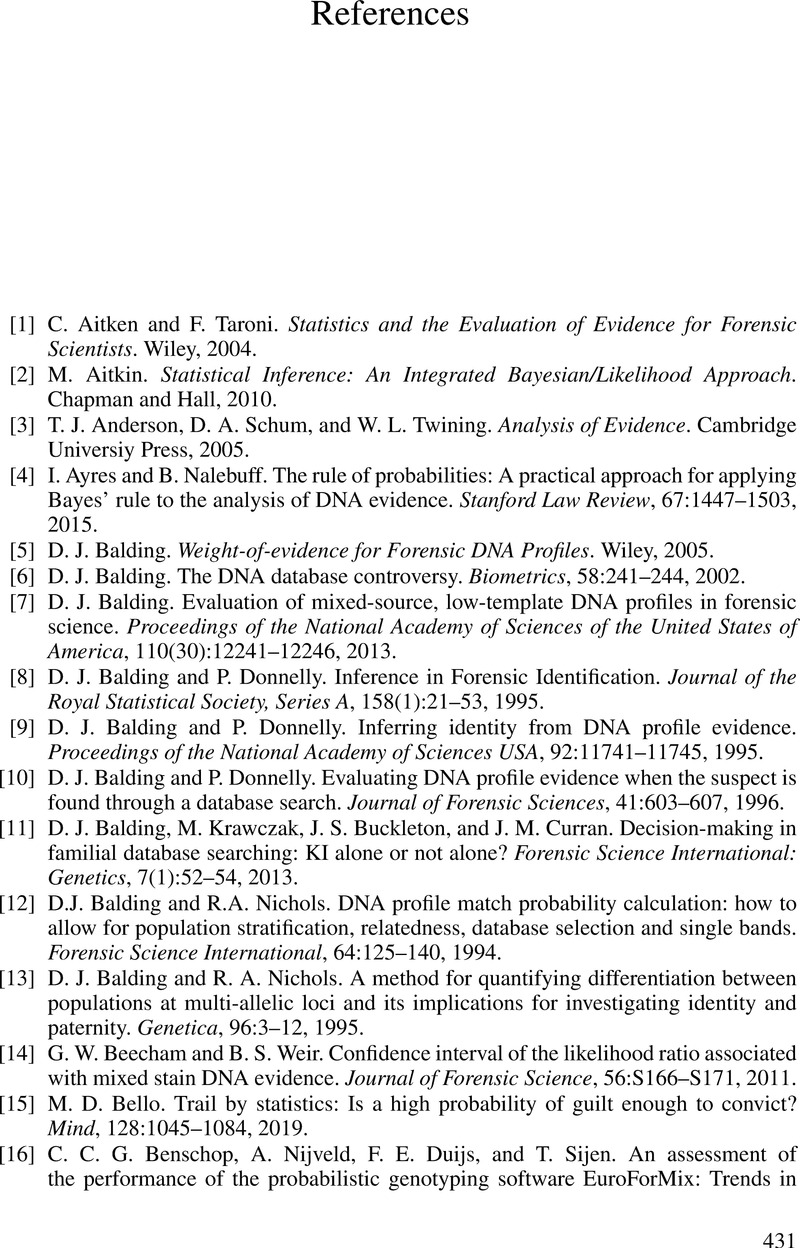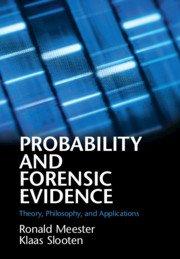Book contents
- Frontmatter
- Contents
- Preface
- 1 Some Philosophy of Probability, Statistics, and Forensic Science
- 2 Evidence and the Likelihood Ratio
- 3 The Uncertainty of the Likelihood Ratio
- 4 Forensic Identification
- 5 The Bayesian Framework in Legal Cases
- 6 Bayesian Networks
- 7 DNA
- 8 Statistical Modeling and DNA Mixture Evaluation
- 9 p-Values of Likelihood Ratios
- 10 From Evidence to Decision
- 11 The Interpretation of DNA Database Matches
- 12 Familial Searching
- 13 Belief Functions and their Applications
- 14 Recommendation Reports
- References
- Index
- References
References
Published online by Cambridge University Press: 09 April 2021
- Frontmatter
- Contents
- Preface
- 1 Some Philosophy of Probability, Statistics, and Forensic Science
- 2 Evidence and the Likelihood Ratio
- 3 The Uncertainty of the Likelihood Ratio
- 4 Forensic Identification
- 5 The Bayesian Framework in Legal Cases
- 6 Bayesian Networks
- 7 DNA
- 8 Statistical Modeling and DNA Mixture Evaluation
- 9 p-Values of Likelihood Ratios
- 10 From Evidence to Decision
- 11 The Interpretation of DNA Database Matches
- 12 Familial Searching
- 13 Belief Functions and their Applications
- 14 Recommendation Reports
- References
- Index
- References
Summary

- Type
- Chapter
- Information
- Probability and Forensic EvidenceTheory, Philosophy, and Applications, pp. 431 - 439Publisher: Cambridge University PressPrint publication year: 2021

